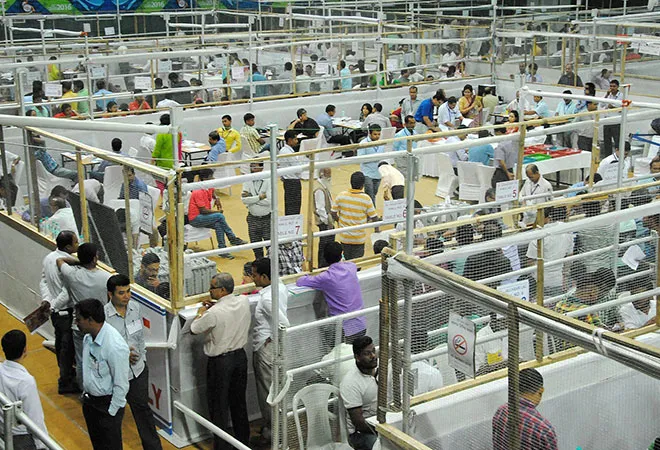India has had only three national parties in recent times — the BJP, the Congress and the CPI(M). Forget the definitions set by the Election Commission for a minute now. The expression ‘national party’ is here used in a very specific sense — not to represent electability as much as policy engagement, intellectual acumen, and the capacity to give strategic direction to a Union Government.
The quintet of state elections that concluded on May 19 had little time for these concerns. In all the states, even Assam, which the BJP won, regional and local issues, symbols and instruments of mobilisation prevailed. It was obvious that notwithstanding the Lok Sabha mandate of 2014, the regional moorings of Indian politics remained strong as ever. To succeed, particularly in state elections, even national parties would need to adapt. Thus the CPI(M), for example, is a very different party in West Bengal and in Kerala, as different as the BJP’s campaign in Bihar in 2015 was from its campaign in Assam in 2016. Also, after the recent results, the onus of taking on Narendra Modi in 2019 is on regional parties far more than on the Congress. Given this celebration of regional politics, what did May 19 indicate for the three national parties?
For the BJP, the expansion in the past two years — encompassing first-time governments in Haryana, Assam, and first-time chief ministers in Jharkhand and Maharashtra — has been even more impressive than its initial surge in the early 1990s, beginning in the Hindi heartland and leading to a breakthrough election in Karnataka in 1994 (40 seats in an assembly of 224). Of course, it took a decade to actually form a government in Bangalore, but the foundation was being laid the whole time.
Now firmly affixed in Assam and more than a foot lodged in West Bengal and Kerala, the party is poised for another leap. In 2018, Karnataka might just be regained. In Kerala, with the Congress in disarray and segments of the party’s minority constituencies switching to the CPI(M)-led LDF (seeing it as the serious challenger to the BJP), Amit Shah’s party could be fancying chances of a Left-BJP bipolarity in the coming decade.
In the east, Assam can be a gateway to alliance-building in other states of the Northeast as well as provide a blueprint for West Bengal. In the latter, the collapse of the CPI(M) in its one-time rural heartland is complete, creating room for a nativist party — which is what the CPI(M) was, behind its jargon. With astute planning and a calibrated promotion of local leaders, sentiments and social alliances, the BJP has been a competitor for that slot. The message for the Congress is a harsh opposite of that for the BJP. Once the very Ganges of Indian politics, with intricate tributaries, the Congress is now as orphaned as the dank, tired Yamuna that flows through Delhi.
Tarun Gogoi, despite his defeat in Dispur, is impossible not to appreciate as a doughty veteran who fought hard. But even he couldn’t overcome the fatigue that had set in after three terms. Nonetheless he leaves behind a substantial legacy, as so many Congress chieftains have, in its history. Unfortunately, there are too few left in the party today. In the BJP, a determined Prime Minister and a driven party president empower state leaders and chief ministers. Congress will certainly continue to have a base in several states but its ability to gain an incremental vote and build on that base is limited. As a consequence, there is an understandable fear that the party will slip into the equivalent of a low-level equilibrium trap for the foreseeable future.
As for the CPI(M), it continues on the downward spiral that began with its fateful decision to withdraw support to the UPA government in 2008. As an electoral force, it is restricted to Kerala, Tripura and, of course, JNU. Its internal squabbles and desperate compromise in tying up with the Congress in West Bengal — to disastrous results, as it turned out — will occupy it in the coming days. Already, a tussle has begun to position Brinda Karat as general secretary and have her replace Sitaram Yechury. Will it make the CPI(M) any more relevant? The answer should be obvious.
This commentary originally appears in Outlook.
The views expressed above belong to the author(s). ORF research and analyses now available on Telegram! Click here to access our curated content — blogs, longforms and interviews.




 PREV
PREV


